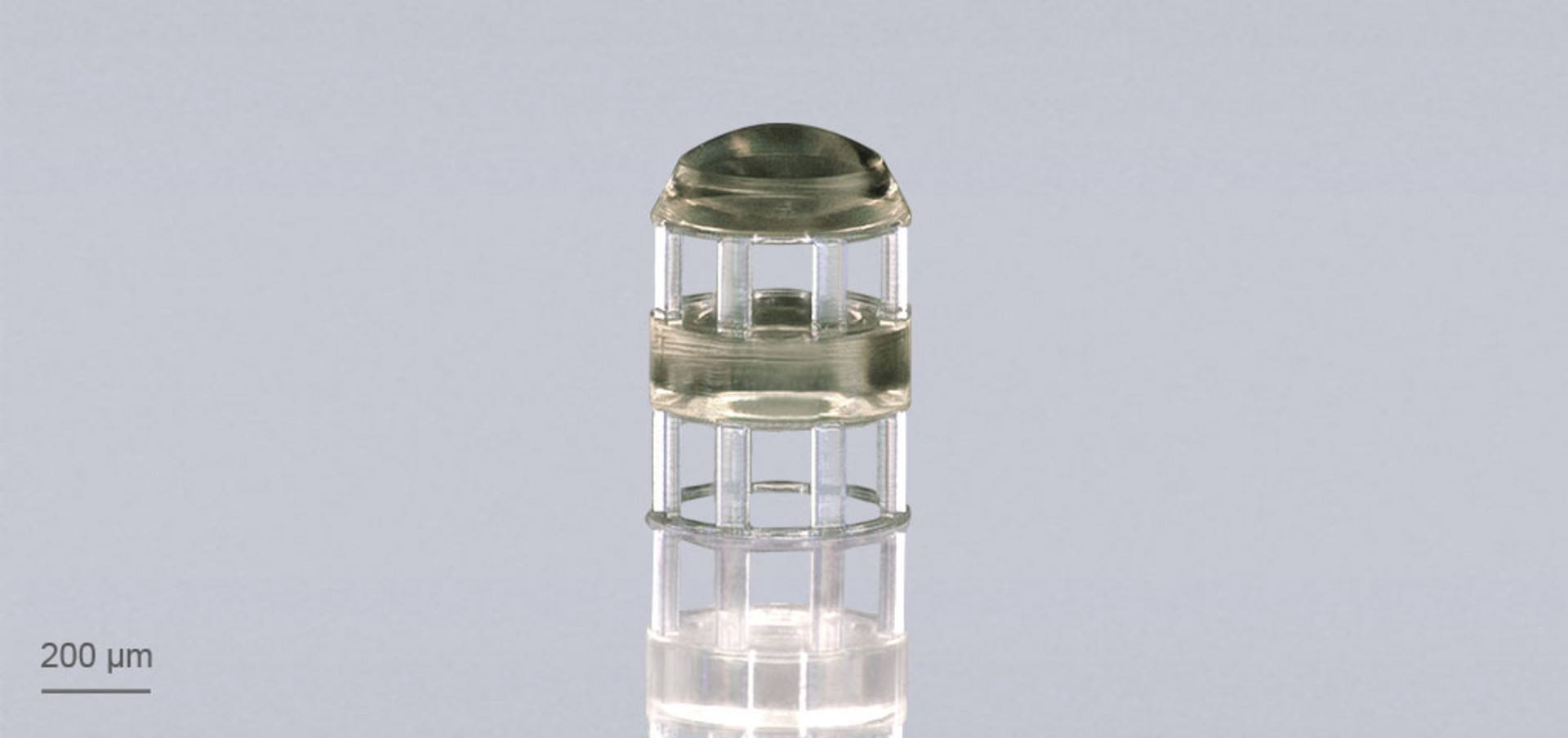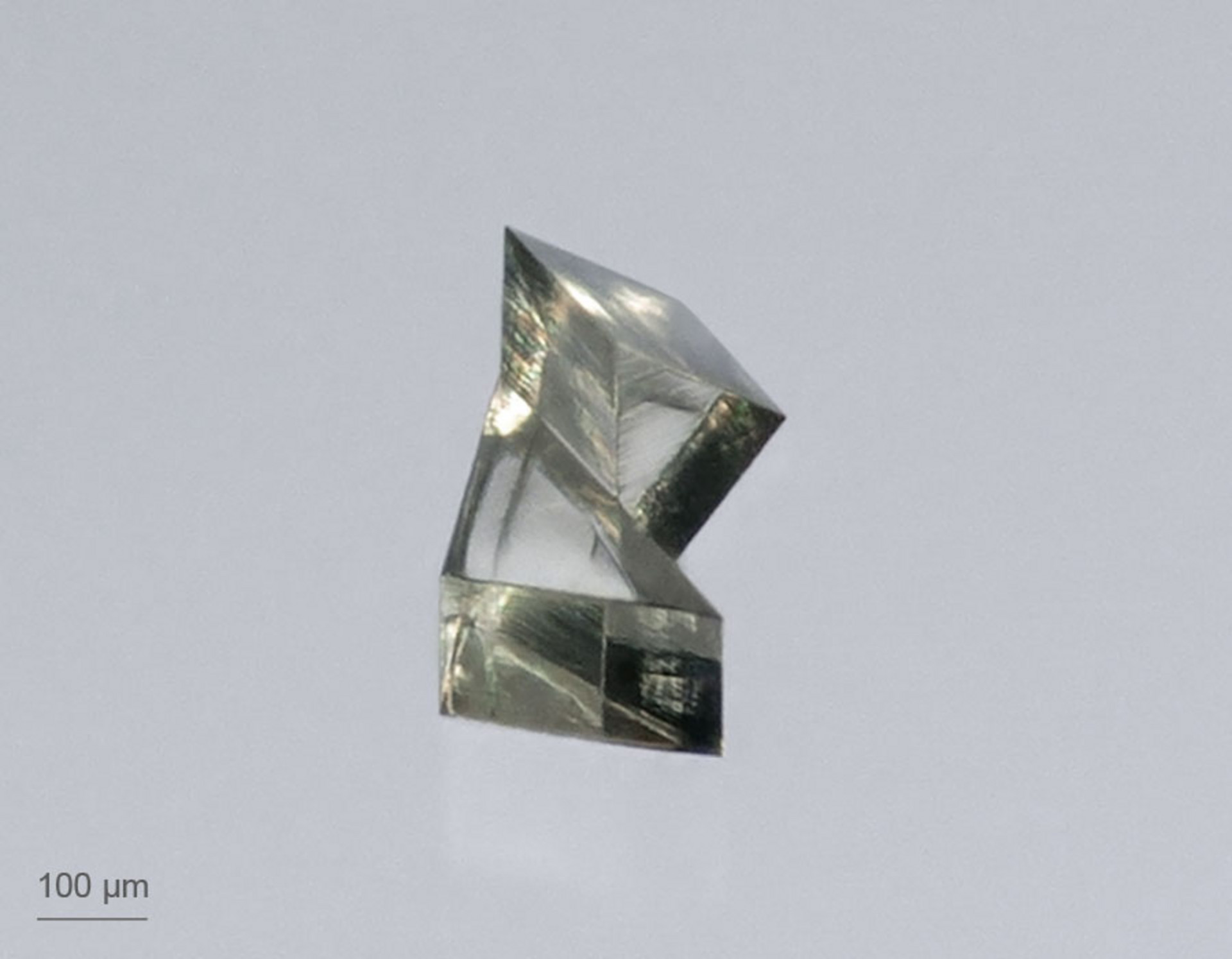High refractive index photoresin enables powerful microoptics
The main advantage of IP-n162 is its high refractive index of 1.62 at a wavelength of 589 nm. Compared to other Nanoscribe’s Two-Photon Polymerization resins, the new printing material offers the highest refractive index. “A high refractive index photoresin like IP-n162 gives the designer additional freedom to create lenses that are more powerful, thinner, less curved, more compact and that can be also 3D-printed faster and cheaper” comments Simon Thiele, project participant of the BMBF funded project PRINTOPTICS and CTO of the spin-off company of the same name. In this project, Nanoscribe is partnering with the University of Stuttgart and the medical technology company Karl Storz in printing miniature optics on fibers for endoscopy applications.
“The most powerful design I realized with IP-n162 was a complex optical system consisting of two lenses with complete freeform surfaces to achieve a distortion-free image. A special feature is the integrated diffractive lens containing fine stair-structures on the top of the lens to correct the color error”, says Thiele about his experiences with the new photoresin. “The high refractive index of IP-n162 helps to make these steps smaller and to reduce stray light”, Thiele summarizes the advantages of IP-n162.
3D Microfabrication drives a new era of freeform microoptics
In addition, the printing material exhibits a low Abbe number of 25, making it the Nanoscribe resin with the highest dispersion. The optical properties of structures printed with IP-n162 are close to optical polymers typically used in injection molding and can be compared to polycarbonates or polyesters.
One possible application of high dispersion is the fabrication of achromatic optical systems. By printing compound optics, consisting of elements made of a lower refractive index next to a higher refractive index material such as IP-n162, achromatic optical systems can be additively manufactured on the microscale.
Interested in this new photoresin for microoptics? Explore more about IP-n162.



